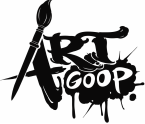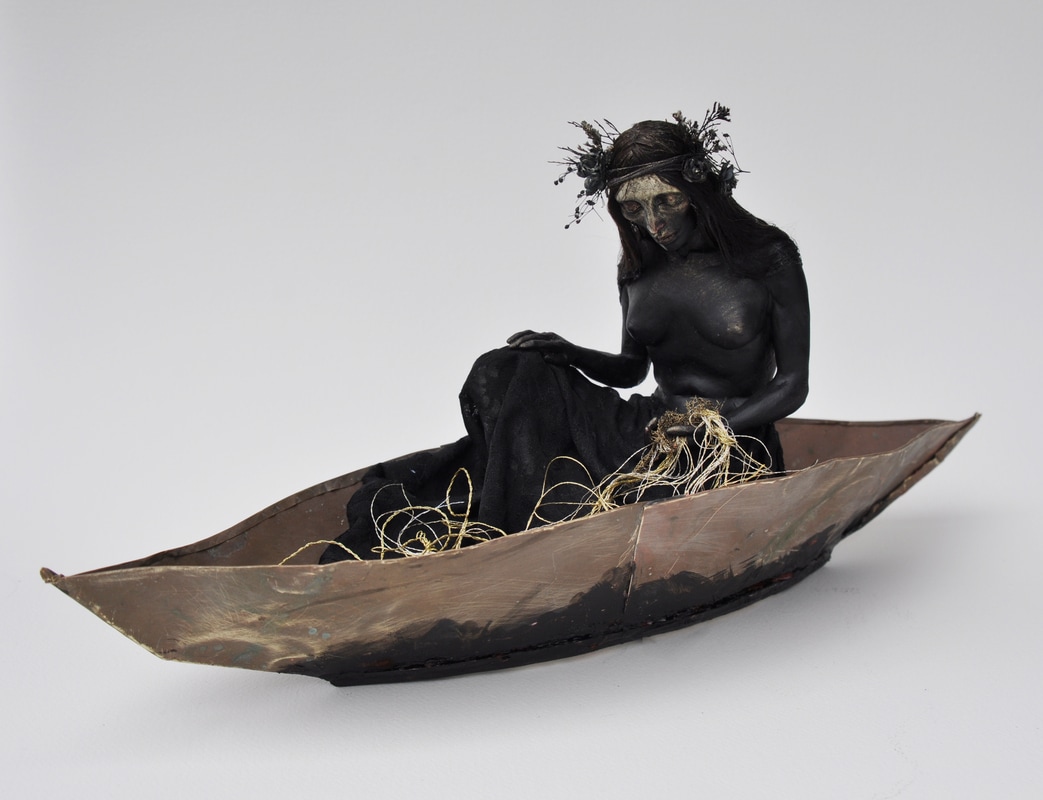|
1. Who were your teachers or influences? I have been very lucky to have a number of amazing teachers as well as friends who continue to help and influence my work, such as Nathan Ota, Bob Dob, David Simon, Glen Eisner, Brian Booth-Craig and many others. I was incredibly fortunate to go to school with a number of super talented people, which was very inspiring. Also my mom, Marcia Dalva, is a sculptor and has always been a big influence in my work, both with technical processes and helping me flesh out ideas. I usually fall back on listing major influences like Degas, Mucha, Schiele, Klimt, Bernini, etc, but I find that I'm often inspired by a wide variety of subjects. Fashion design is very influential, whether it's an antique piece of flowy silky simplicity by Madeleine Vionnet or the dramatic mantles of Paul Poiret, or the more modern work of houses like Balmain, Valentino, McQueen, and there's this one couture collection, Fall 2009 I think, by Galliano that has been in regular use as makeup inspiration for my figures. This list is getting long, but also I can't forget more contemporary artists like Elizabeth McGrath (who's work was one of the reasons I started sculpting in the first place), Virginie Ropars, Andrew Hem, Allison Sommers, and countless others who I'm constantly blown away by. Also just old things, animals moving certain ways, movies, quiet woods and peeling paint. Those are important too. 2. What techniques or tricks did you find most useful when learning to paint? Well, I'll plug my little tutorial here! http://www.instructables.com/id/Finishing-and-Detailing-a-Sculpey-Polymer-Clay-Scu/ I think gestural drawing is incredibly important, and just studying and practicing creating the anatomy of your subject. I try to do as much drawing from life as possible, I took my first life painting class in high school and will forever know I'm just scratching the surface of the subject. Drawing lightly at first. Not being too precious with your work. Knowing when to stop. Knowing when to just throw something out and start over rather than endlessly fiddling with it. Also the vital and basic practice of working out your work as a small, rough thumbnail image first before diving in. This helps avoid major issues later on, and sometimes brings you to a different and better conclusion than your original intention. And, as my mother always says, "Tools are your friends." So, finding the right tool for what you need to accomplish. 3. What are 3 key principles of making good art, in your opinion?
4. What are the most common mistakes that you see other artists make? Sometimes people don't seem to do their homework. This is something I did when I first started out, I used what I thought was a super unique reference image (from the internet, first mistake!) and then later found out it was a photo of a famous actress from silent films, which is still embarrassing years later. Now, if I'm using a photo for direct reference I make sure either I took it myself, or, if im in need of something I can't reasonably photograph myself (I don't have a lot of access to snarling tigers but sometimes you just need that photo) I make sure to alter it or mix together a few images so it's not just regurgitating someone else's work. I think this is a common issue for many artists, since it's so easy to access images. *this is not to discredit the huge benefits one can get from doing master copies, though. Also I think a lot of people want shortcuts, and give up on their work when it's not immediately as amazing as they think it should be. I think the practice and obsession required to be good at any kind of art is usually simplified. You have to power through making a lot of bad drawings, ugly paintings and stupid sculptures. It's constantly walking that fine line of knowing that you're pretty good at something so you should keep doing it, but knowing also that you're kind of terrible and need to work a lot harder, all the time. 5. Can you break your painting process down into 10 steps, or less, for us? (This is a general idea of the process for a sculpted figure in a shadow box, but sometimes I'll use a glass dome or have a figure freestanding)
6. What colors are currently on your palette? Usually I put out these colors but don't necessarily use them on every piece, they're all Liquitex brand heavy body acrylic: Unbleached titanium Titanium white Parchment Ivory black Raw umber Burnt sienna Alizarin crimson Turner's yellow Prussian blue Perylene maroon (this one is new- Windsor & Newton) Red oxide Yellow oxide Cad red medium 7. Do you have a paint color or medium or other art-related implement that is indispensable? If so, what is so useful about it? Xacto knife. Super useful while sculpting, to scrape things, carve cured Sculpey, scratch details into clay, and, you know, sharpen pencils. About the Artist: Jessica Dalva dabbles in painting, sculpting, sewing tiny and regular sized costumes, set design, puppetry, and welcomes new tasks daily. A northern California transplant, Dalva lives and works in Los Angeles, and hopes someday to know how to make everything and/or anything.
1 Comment
|
Art GoopArt Goop is a Q&A for artists by artists. We ask questions designed to examine the techniques and methods of some of the most inspiring artists working today. Categories
All
Archives
September 2017
|


 RSS Feed
RSS Feed